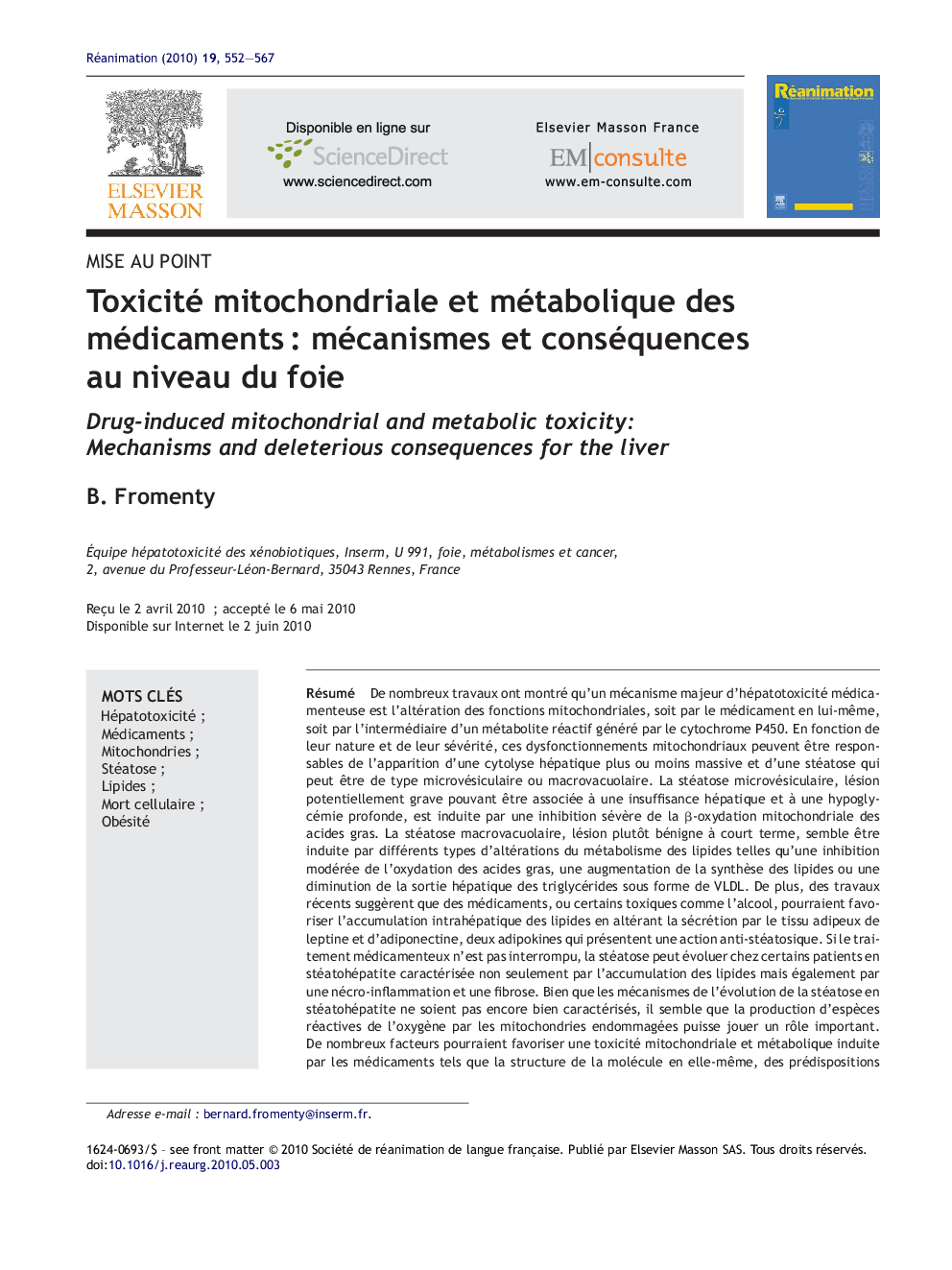| کد مقاله | کد نشریه | سال انتشار | مقاله انگلیسی | نسخه تمام متن |
|---|---|---|---|---|
| 2613163 | 1134829 | 2010 | 16 صفحه PDF | دانلود رایگان |
عنوان انگلیسی مقاله ISI
Toxicité mitochondriale et métabolique des médicaments : mécanismes et conséquences au niveau du foie
دانلود مقاله + سفارش ترجمه
دانلود مقاله ISI انگلیسی
رایگان برای ایرانیان
کلمات کلیدی
موضوعات مرتبط
علوم پزشکی و سلامت
پزشکی و دندانپزشکی
طب اورژانس
پیش نمایش صفحه اول مقاله

چکیده انگلیسی
Numerous investigations have shown that a major mechanism of drug-induced liver injury is mitochondrial dysfunction, involving the parent drug by itself or a reactive metabolite generated through the cytochrome P450. Depending of their nature and their severity, mitochondrial alterations are able to induce hepatic cytolysis and steatosis that can be microvesicular or macrovacuolar. Microvesicular steatosis, a potentially severe liver injury that can be associated with liver failure and profound hypoglycemia, is due to a major inhibition of mitochondrial fatty acid oxidation. Macrovacuolar steatosis, a relatively benign liver injury in the short term, can be induced by different types of alterations of lipid homeostasis including a moderate reduction of fatty acid oxidation, an enhancement of lipid synthesis and a decreased hepatic export of VLDL-associated triglycerides. Moreover, recent investigations suggest that some drugs, as well as ethanol intoxication, could favor lipid accretion in the liver through an altered secretion by the white adipose tissue of leptin and adiponectin, two adipokines that have an anti-steatotic action. If the treatment is not interrupted, steatosis can evolve toward steatohepatitis, which is characterized not only by lipid accumulation but also by necroinflammation and fibrosis. Although the mechanisms involved in this worsening is not fully characterized, it appears that overproduction of reactive oxygen species by the damaged mitochondria could play a salient role. Numerous factors could favor drug-induced mitochondrial and metabolic toxicity such as the structure of the parent molecule, genetic predispositions (in particular those involving mitochondrial enzymes), ethanol intoxication, hepatitis virus C infection and obesity. In the obese patients, some drugs could not only induce drug-induced acute liver injury more frequently but also worsen the preexistent steatosis (or steatohepatitis).
ناشر
Database: Elsevier - ScienceDirect (ساینس دایرکت)
Journal: Réanimation - Volume 19, Issue 6, October 2010, Pages 552-567
Journal: Réanimation - Volume 19, Issue 6, October 2010, Pages 552-567
نویسندگان
B. Fromenty,